
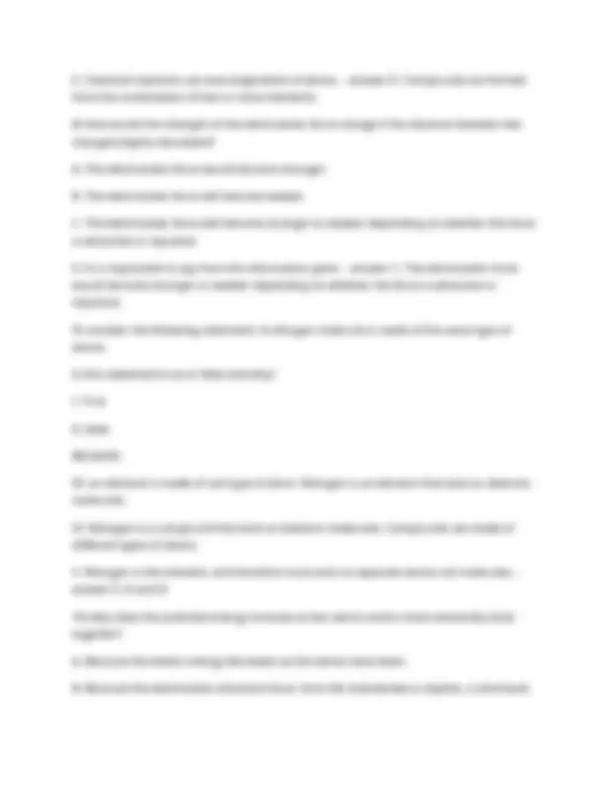
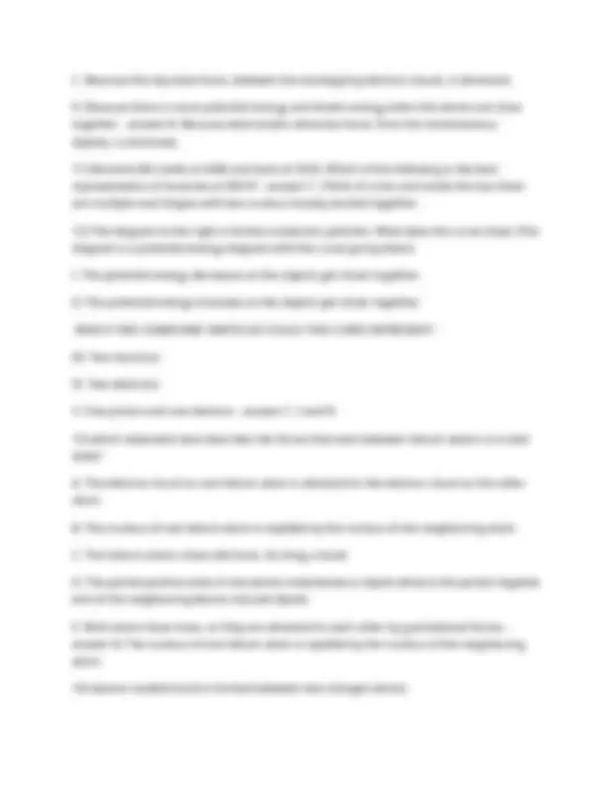
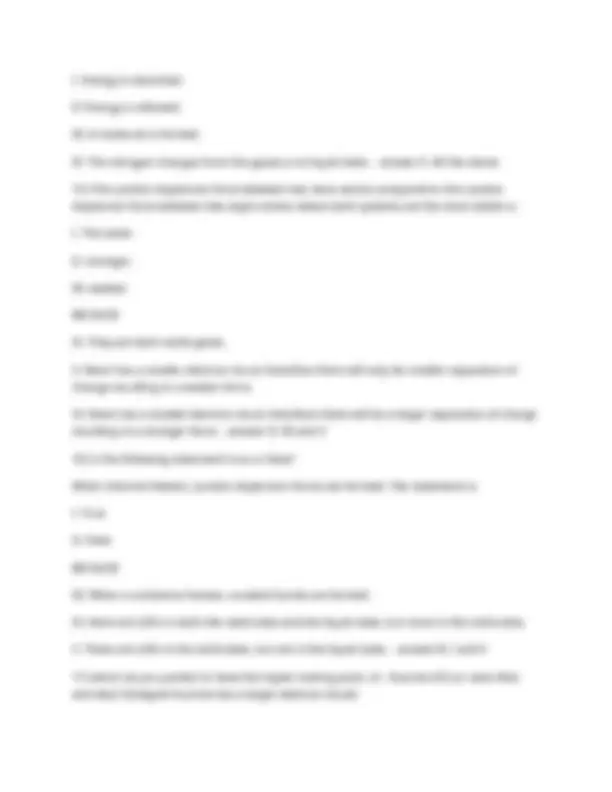
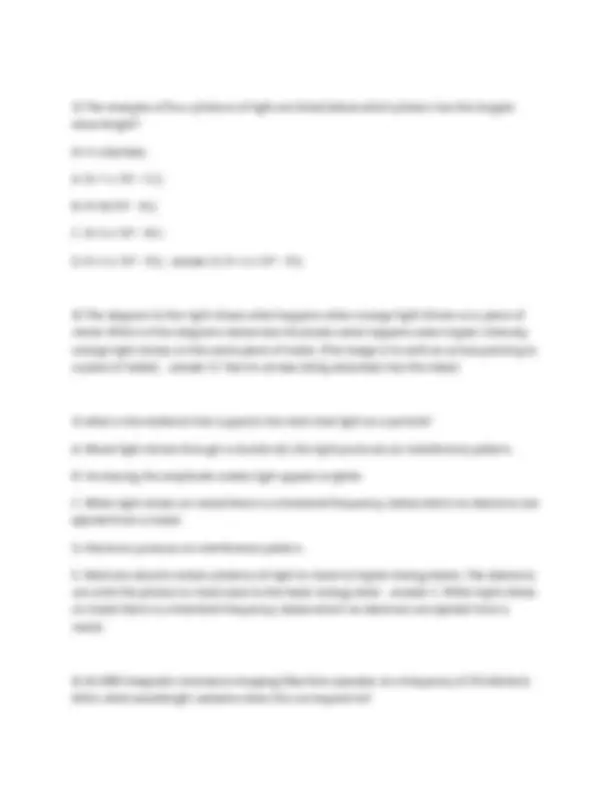
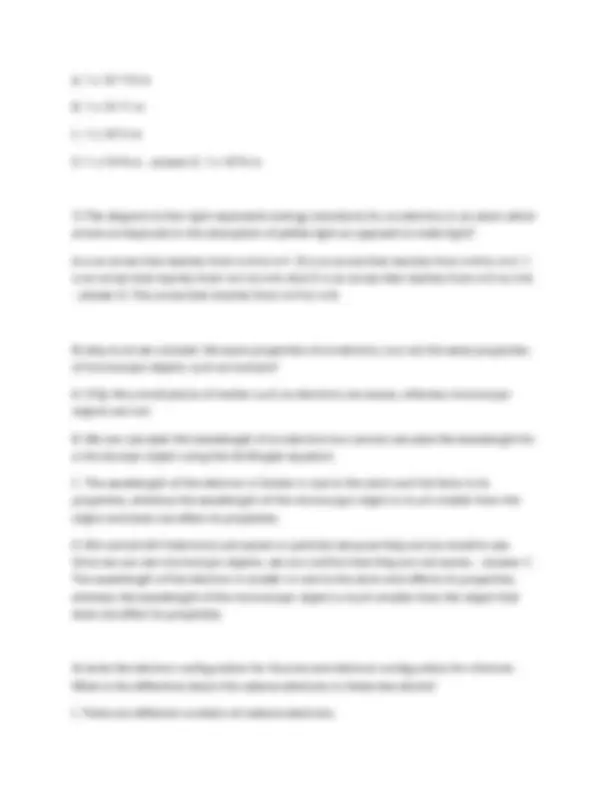

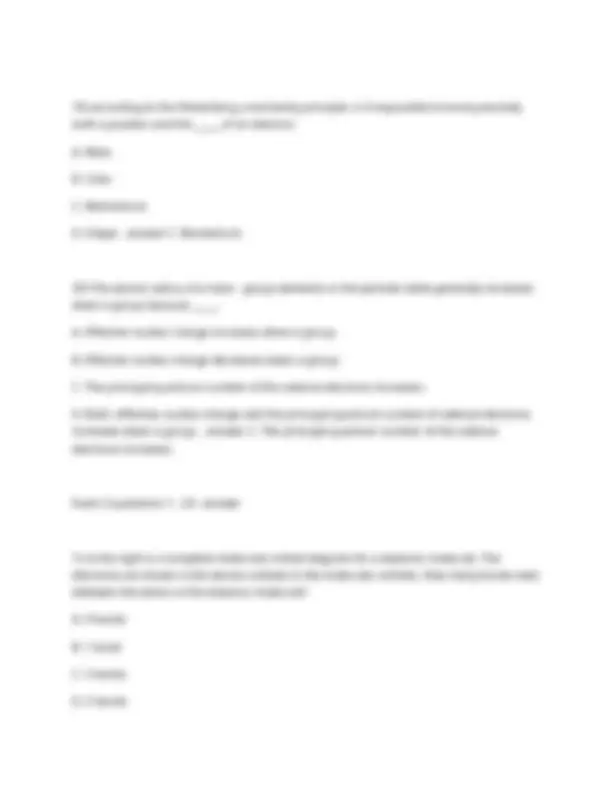


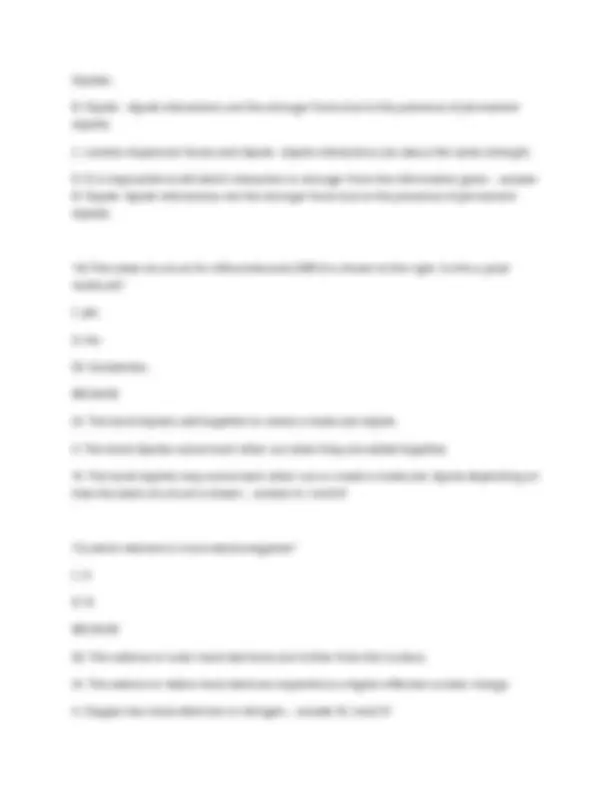

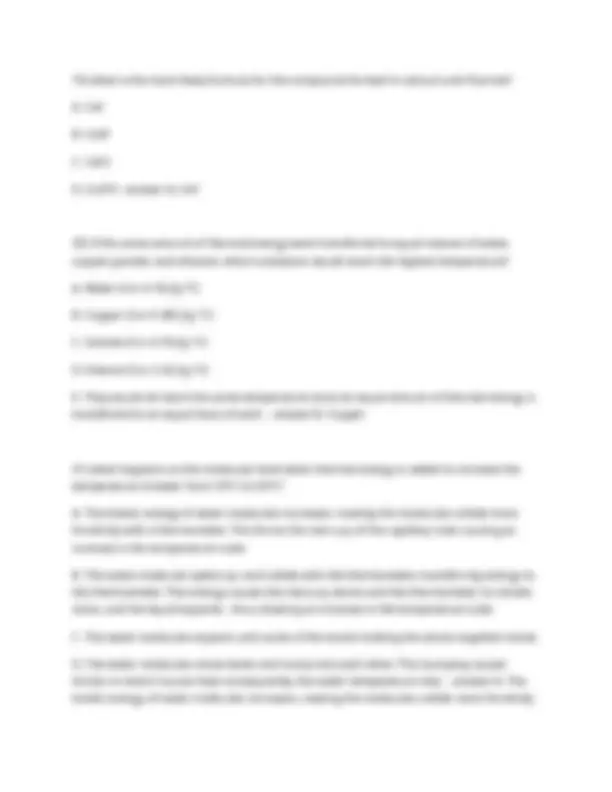




Study with the several resources on Docsity

Earn points by helping other students or get them with a premium plan


Prepare for your exams
Study with the several resources on Docsity

Earn points to download
Earn points by helping other students or get them with a premium plan
Community
Ask the community for help and clear up your study doubts
Discover the best universities in your country according to Docsity users
Free resources
Download our free guides on studying techniques, anxiety management strategies, and thesis advice from Docsity tutors
Chem 1160 Final Exam Study Guide With Complete Solutions.
Typology: Exams
1 / 22

This page cannot be seen from the preview
Don't miss anything!















Exam 1 questions 1 - 20 - answer
III. Most of the positively charged alpha particles shot at I thin gold foil past straight through. IV. A small fraction of the positively charged alpha particle shot at a single foil were deflected. V. The beam of particles emitted from the cathode bent towards the positively charged plate. VI. The beam of particles emitted from the cathode behaved the same no matter what type of metal the cathode was made of. - answer D. II and VI
C. Because the repulsive force, between the overlapping electron clouds, is dominant. D. Because there is more potential energy and kinetic energy when the atoms are close together. - answer B. Because electrostatic attractive force, from the instantaneous dipoles, is dominant.
I. Energy is absorbed. II. Energy is released. III. A molecule is formed. IV. The nitrogen changes from the gaseous to liquid state. - answer E. All the above
II. The valence electrons have different energies. III. The valence electrons are in different types of orbitals. IV. The valence electrons are in different size orbitals. - answer E. II and IV
I. Fluorine II. Oxygen BECAUSE III. Core electrons are more strongly attracted to the nucleus than valence electrons. IV. Balance electrons release more energy when they are removed from the atom. - answer C. II and III
E. 4 bonds - answer C. 2 bonds
A. London dispersion forces B. London dispersion forces and covalent bonds C. London dispersion forces and hydrogen bonds D. London dispersion forces, hydrogen bonds, and covalent bonds E. Covalent bonds - answer A. London dispersion forces
II. Isomers BECAUSE III. They have the same formula but different atom connectivity IV. They have the same formula and same atom connectivity V. They have different numbers of C a d H atoms - answer A. I and III